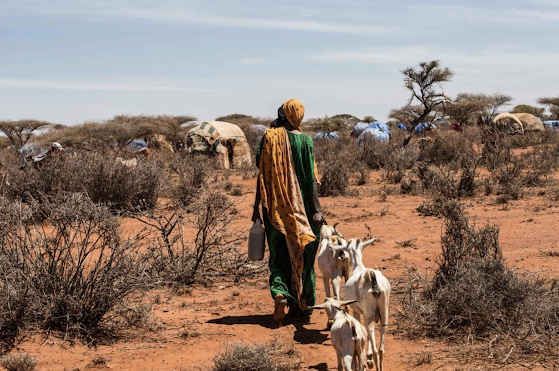Cape Town Droughts: A Political Problem?
In last week’s post, we looked at how climate change is commonly cited as an explanation for Cape Town’s water crisis. In fact, the premier of the Western Cape suggested that the reason for the lack of preparedness for the 2015-17 droughts was primarily due to the unpredictability of climate cycles resulting from global warming (Nature 2018). However, this week I want to be more critical of this approach of attributing the sole blame for natural disasters on climate change. I would argue that, yes, climate change likely contributed to the worst droughts experienced in Cape Town over the last century (Otto et al. 2018). However, the water shortages and suffering were also likely caused by human factors such poor policy and planning (Figure 1) (Cornell University 2018). By shifting the blame of the Cape Town droughts onto climate change allows politicians to avoid fixing underlying problems that could otherwise have improved their adaptive capacity to the water shortages. Therefore, the aim of this post will be to take a more integrated approach to understanding the Cape Town droughts and how this could help to improve the city’s water resilience in the future.
 Figure 1. Cape Town residents fill up water containers from a natural spring as part of the restrictions imposed to reduce water consumption in the city in November 2017 (Nature 2018).
Figure 1. Cape Town residents fill up water containers from a natural spring as part of the restrictions imposed to reduce water consumption in the city in November 2017 (Nature 2018). I would argue that it was the interplay between environmental factors and South African politics which contributed to the severity of Cape Town’s droughts. For years, engineers and climate scientists had warned that given declining rainfall trends as well as the rise in the demand in water from urban population growth and poor water infrastructures, Cape Town could soon face a water crisis (The Atlantic 2018). In South Africa, the management of water resources is shared across the national, provincial and local levels of government (Molobela and Sinha 2011). However, the shortage of skills and deteriorating finances at the national level have often led to the abandonment or delays in funding for water infrastructure and strategies in the cities (The Conversation 2018). For example, corruption and financial mismanagement have been commonplace with the national department of Water Affairs and Sanitation delaying the declaration of disaster areas in Cape Town during the 2015-17 droughts to avoid relief funding (Global Water Forum 2018). Instead, more attention has been placed on attracting big investments into the city which often result in unsustainable developments that utilise more than their fair share of water (Figure 2) (The Sunday Times 2018). This shows how Cape Town lacks sufficient resources, adequate planning and the political will to make water resource management in the city a priority.
 Figure 2. The city bowl in South Africa, where big development projects have been prioritised over water management infrastructures (Photo credit: Discover Africa 2020).
Figure 2. The city bowl in South Africa, where big development projects have been prioritised over water management infrastructures (Photo credit: Discover Africa 2020). Furthermore, there also appears to be little public support to conserve water. This may be due to the lack of water management programmes at the local level to raise awareness of benefits of responsible water consumption(The Conversation 2018). Additionally, due to backlash from local residents and to maintain their popularity, politicians are also often reluctant to impose strict water regulations (The Conversation 2018). Considering domestic water use takes up the largest share of water resources in Cape Town, overuse by locals is more likely when there are poor water management policies (Matikinca et al. 2020). Therefore, a culture of unsustainable water consumption on top of declining rainfall trends are likely to have exacerbated Cape Town’s water crisis.
Overall, I hope this post has shown that the severity of Cape Town droughts were not just the result of climate change, but also the result of complex social and political factors. It suggests that to avoid a future water crisis, Cape Town needs to have a proper water-management system that politicians and locals understand and are empowered to implement. However, major challenges to achieving this in Cape Town include lack of funds for water management planning and resources. This is a typical challenge faced by many developing countries and could be resolved by greater collaboration with experts from a range of disciplines to ensure the most feasible solutions to the water challenges are met under ongoing environmental changes.

Comments
Post a Comment